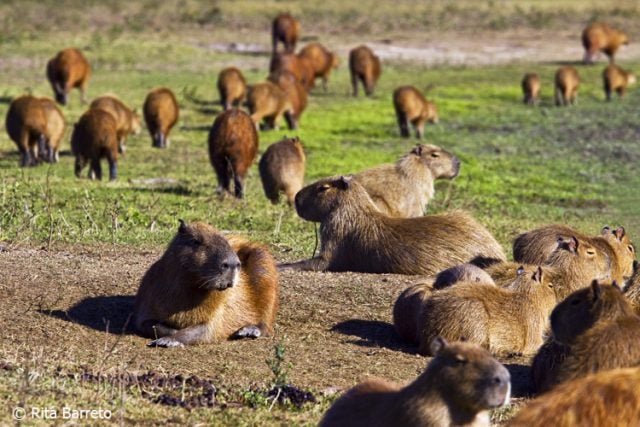The capybara is not dangerous, on the contrary, it is elusive, fearful and scares easily. In addition, it is a unique animal and the largest rodent in the world.
In Argentina, the controversy continues over the arrival of capybaras, carpinchos or chigüires, the largest rodent in the world, to the closed neighborhood of Nordelta, located in Tigre, in the province of Buenos Aires.
The issue divides the population into two points of view: some advocate to expel the animals; while others are inclined to coexist with them.
Those who ask for the expulsion, brand this episode as an invasion. Some residents of this area, considered the largest private neighborhood in Argentina and the residence of many people with high purchasing power, have reported that there have been attacks on pets and traffic accidents.
For this reason, many point out that coexistence is already proving impossible and ask that the animals be transferred to another place, says a report from RT.
On the other hand, the defenders of these animals point out that their proliferation in the streets and around the houses is due to the destruction of what has historically been their habitat.
The capybara is not a dangerous rodent
«The capybara is not dangerous at all, on the contrary, it is elusive, it is fearful, it scares easily. If you get close, he will let you get a little closer, but when he sees that you are invading his territory, with a little shout or with a bark, he will tell all the members of the pack that there is danger and they all jump to the water”, says Nora Nouche, a neighbor of Nordelta.
The interviewee adds that «they were saying that the capybara is aggressive, that it attacks, be careful with children», which she considers to be «far from reality».
For his part, Guillermo Fernández, from the Nuevo Delta Association, mentions that the solution to all this controversy is to reestablish balance in the area, which was lost «the moment they began to cut down the mountains and began to make new real estate ventures».
«Today, a large part of areas that used to be wetlands and islands are being devastated and that is why the capybaras are […] at the moment, in the streets», he emphasizes.
Learn to coexist
In the same way, Javier Vásquez, also a neighbor of Nordelta, thinks that they need to learn to coexist with these animals.
«We are the invaders here, many of us came precisely to be in contact with nature […] We came here and we have to respect the animals that were previously here», he stressed.
Public Campaign
Given the controversy that has been generated, the Ministry of Environment and Sustainable Development of Argentina launched a public campaign for people to learn more about capybaras.
«Knowing our native species is the key to valuing them», says the institution in a post on Twitter, where it points out that the capybara «constitutes a fundamental piece of wetland biodiversity».
The ministry gives recommendations on what to do in case you have an encounter with a capybara. Faced with this situation, it asks people: Do not hurt them. Do not approach. Contact the jurisdiction’s wildlife or zoonoses authority.











